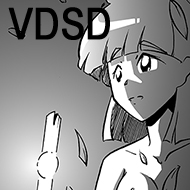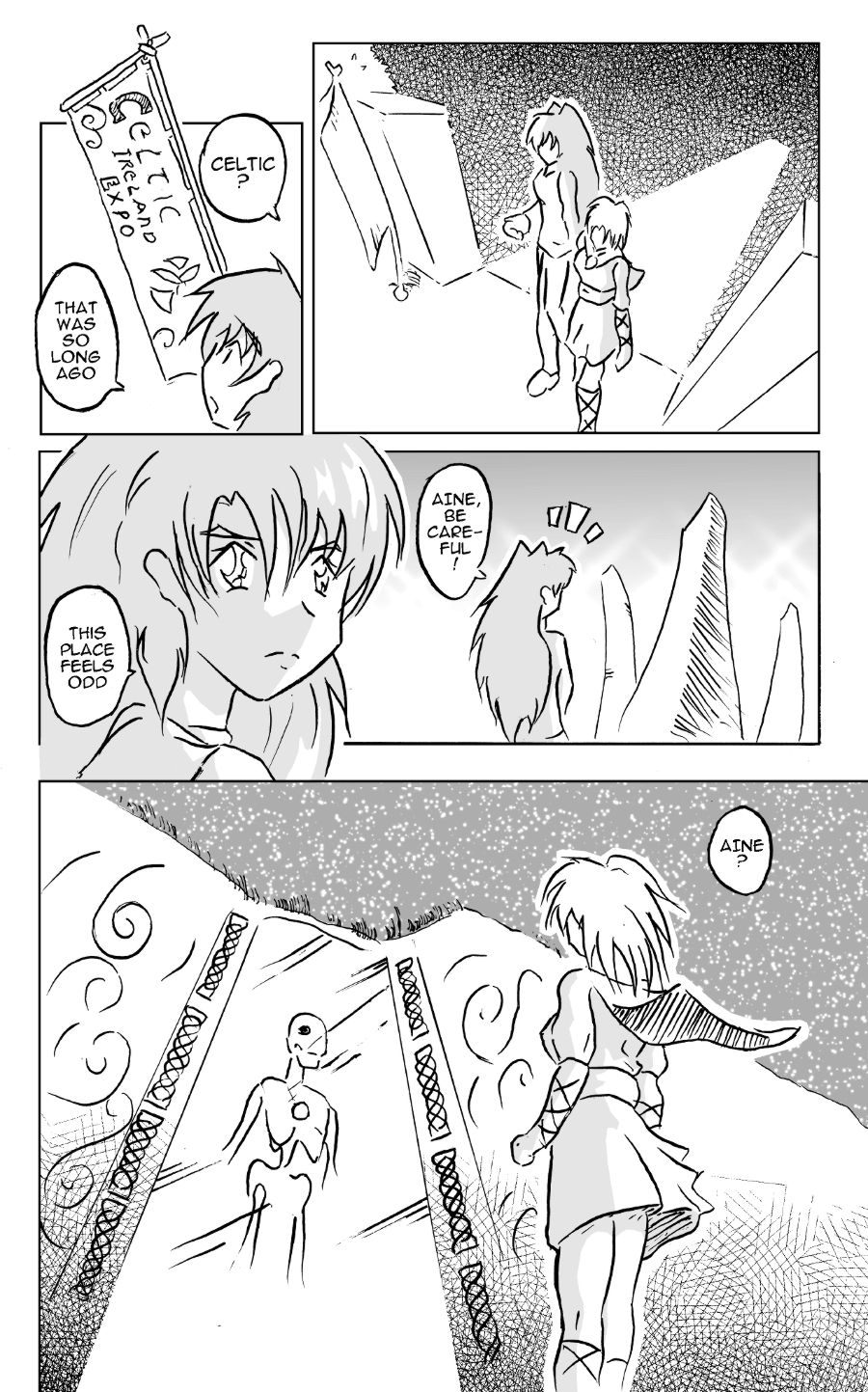NB! Japenese Format! Reads RIGHT to LEFT!
That last panel was one of the scenes that didn’t need a lot of reviewing. Nao seemed to like it, even in the early drafts, and thus it stayed in.
Part 8: Turning Japanese
One of the main reasons I have take a proper course in manga production, was to try and understand how manga pages are formed. Although Western comics can both read & look well, I have always felt that Manga have a very specific feel that makes them effortless to read and enjoy. I had asked Nao about this process now and again over the time I had known her, but this course had finally presented a chance to really study her method of building manga pages.
The first thing I had to learn was that manga page layout is built specifically with the Japanese language in mind. Many of you may already know that Japanese books read right-to-left. But less obvious is the fact the traditionally Japanese is written in downward columns, starting at the top-right and finishing on the bottom left. Thus Japanese manga pages are not only reverse direction of western comics, but they are also tilted 90 degrees in a different direction.
Nao had asked me at the start if I had wanted to produce the one-shot in the Japanese format, or in a more western Left-to-Right format. I was a little torn on this, as I had known that I would continure to produce Bata Neart and Back Office pages in left-to-right, but at the same time I really wanted to properly learn the process in the same way that a local student would. I choose in the end to draw in the Japanese format. I would try my best to study manga as it was intended to be, and then work on ‘westernising’ my learnings later on.
Another thing a learned also, which will now stick with me for future work, is the page format.
For all these years I have been drawing on my own custom page format built from standard A3 sheets. This has presented several challenges when it came to formatting pages for printing. However thanks to Nao I was introduced to the stardard A5 manga page and the layouts attached to that.
Next time: New page type, new structure.




Hmm…Celtic expo, huh? Aine will fit right in. She might even be mistaken for one of the staff.
Either that’s a very out of place fun house mirror, or they’re keeping a skeleton on display for some bizarre and morbid reason.
Wait! Maybe it’s the skeleton of Tony Stark.
Hah – I can just see Aine getting mobbed by tourists wanting to take selfies with her. That might be more traumatic than the mild concussion from the train. LOL
BTW, Rawr, is Celtic with a hard C or a soft C? You hear it both ways in the US, although I think the hard C is preferred.
@Farren: Wait…Tony’s dead?! Noooo!!! 😀
@Kessy: Celtic should be pronounced with a hard C, making it sound like ‘Keltic’.
Some do say it with a soft C resulting in the word sounding like ‘Seltic’, however I have always felt that is wrong.
Some in Ireland will say ‘Seltic’, but that is mainly down the pronunciation of the name of a popular Scottish soccer team called ‘Celtic’, which has resulted in many soccer fans mispronouncing the word.
Ha! It’s all the fault of professional sports. I think in the US the ‘seltic” pronunciation is mainly due to the Boston Celtics, a basketball team.
@Kessy: Exactly! Both the Boston Celtics and Glasgow Celtic F.C. have a lot to answer for 🙂